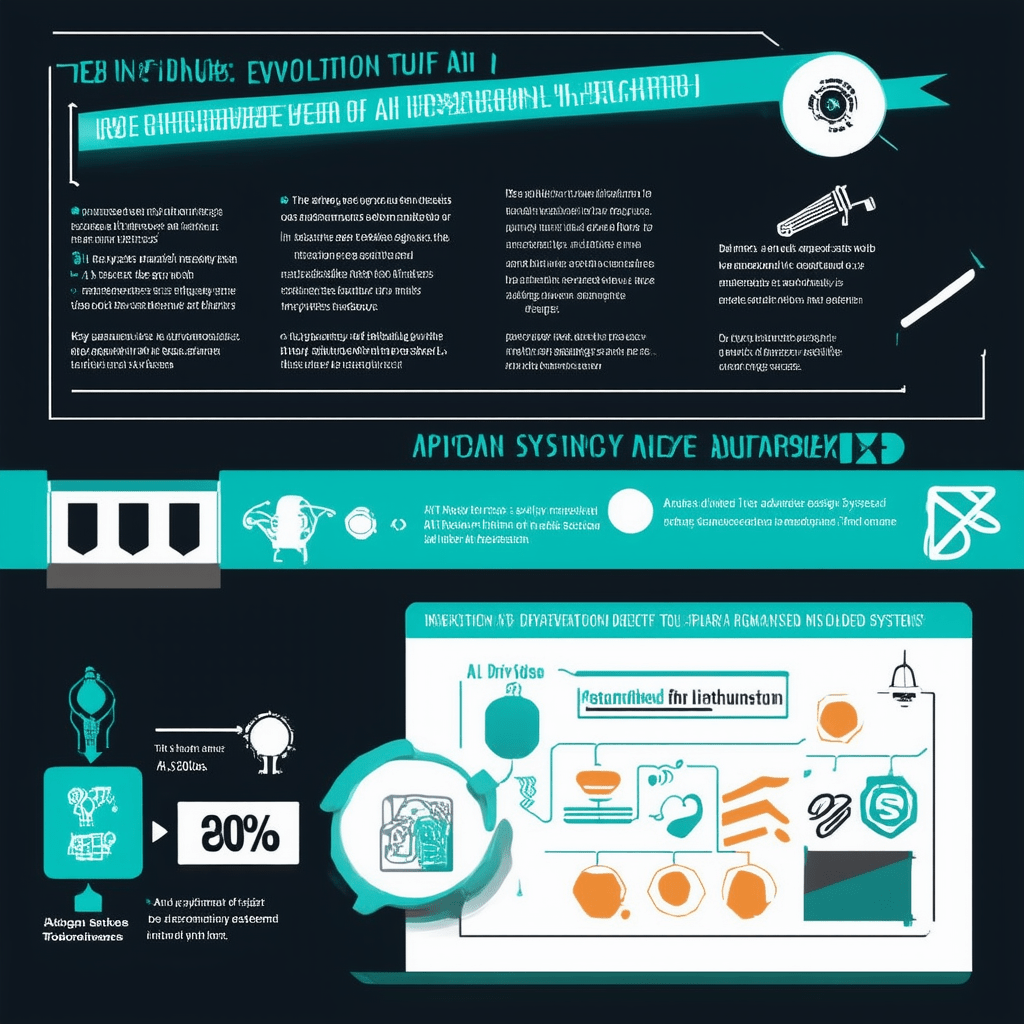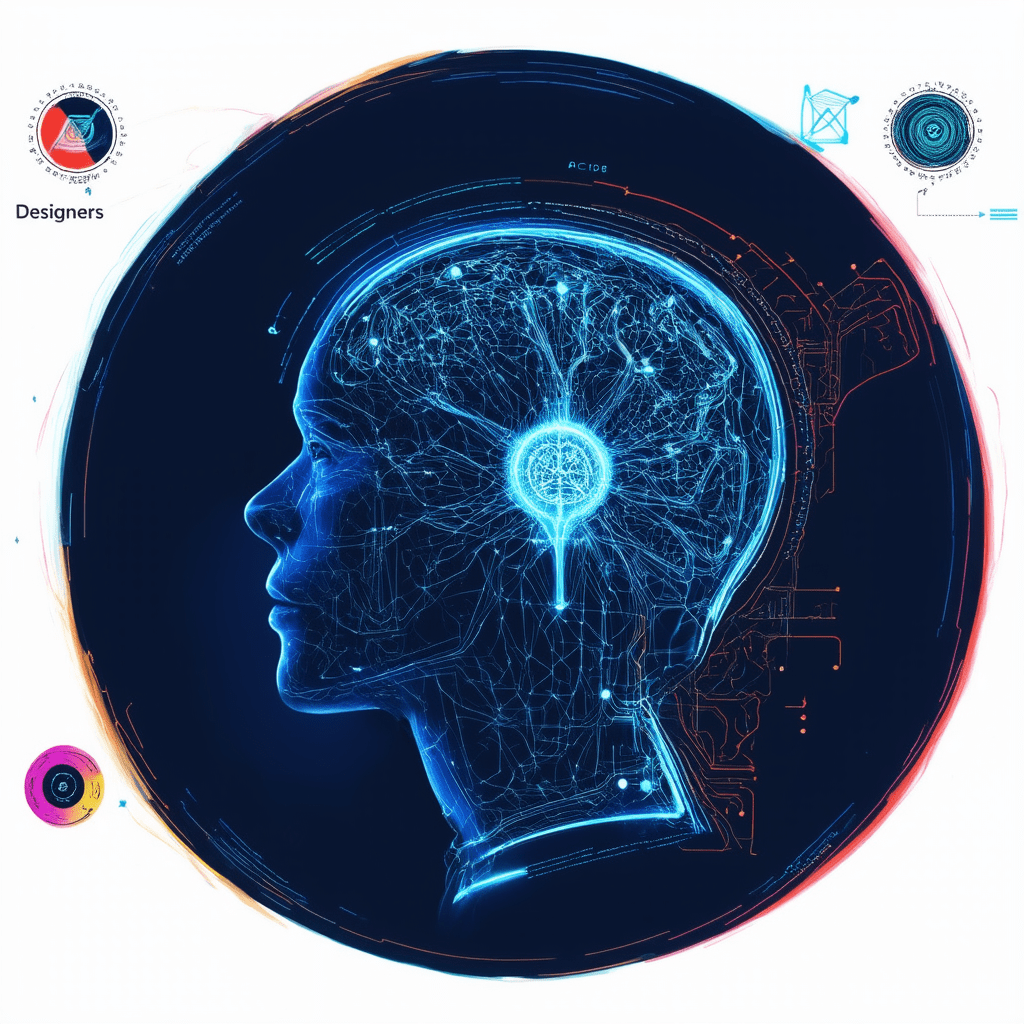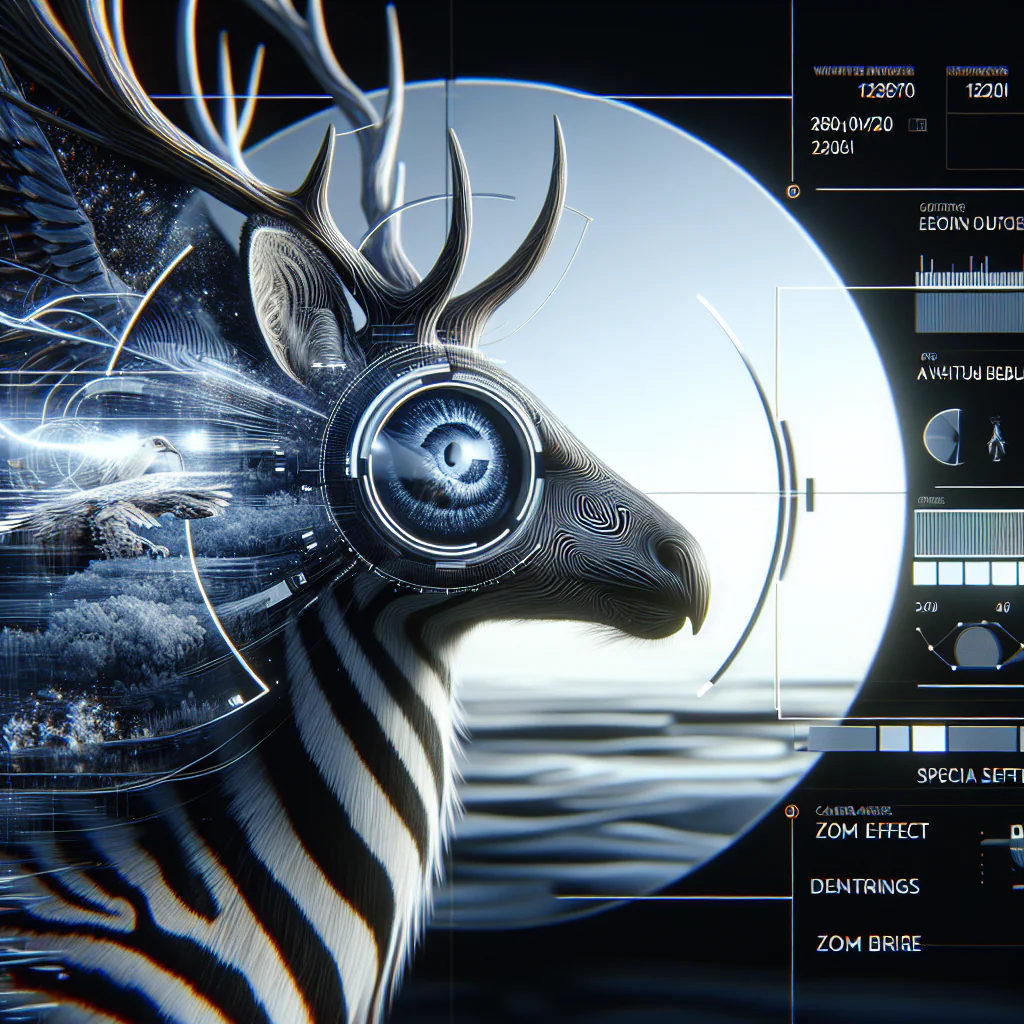Introduction: A Deep Dive into %TOPIC_SINGULAR%
Table of Contents
Picture a scenario where your creative visions are seamlessly brought to life, not just by your skillset but with the help of an intelligent system that fine-tunes every pixel with precision. This is the reality AI is crafting in the realm of graphic design—a revolution that’s reshaping creativity worldwide. Back in the early 2000s, we saw the dawn of AI with basic tools that could automate mundane tasks like resizing images or simple photo edits. These tools were groundbreaking then, offering designers a glimpse into a future where AI could shoulder the repetitive burdens of design work. (Read our full guide on AI Tools and Applications.)
Today, the landscape is drastically different. AI systems are not just helpers; they’re collaborators in the creative process. Take, for instance, platforms like Adobe’s Sensei or Canva’s design suggestions. These tools analyze your design style and suggest improvements, enabling designers to focus on more complex creative decisions. AI can now generate complex patterns and layouts, sometimes even predicting design trends by analyzing vast datasets. This evolution isn’t about sidelining designers. Instead, it’s akin to giving an artist a new brush that can execute strokes with unprecedented accuracy and speed.
In practical terms, AI assists in tasks like color correction, layout adjustments, and even crafting personalized marketing materials tailored to individual preferences. A common mistake is to view AI as a replacement for human creativity. In truth, it’s an enhancer. What this means in the real world is that designers can push the boundaries of their creativity, knowing that AI will support them in refining the technical aspects. The key takeaway here is clear: AI is not the future replacement of designers but an invaluable tool that amplifies human creativity and efficiency in ways we are just beginning to explore.

Key Benefits and Advantages
AI tools have revolutionized how designers approach their work, particularly when it comes to handling repetitive tasks. Think about color correction and image resizing—these are necessary but often tedious chores that can eat up valuable time in a designer’s day. With AI stepping in, designers like myself can shift our focus away from these mundane tasks. Instead, we get to pour our energy into more creative endeavors, like crafting a unique visual narrative or experimenting with innovative design elements.
Take Adobe Sensei as an example. It’s an AI-driven platform that’s been a game-changer for streamlining tasks that once required hours of manual labor. Sensei uses machine learning to understand what an image needs in terms of color balance or size, making adjustments that are both precise and efficient. This means more time for designers to brainstorm and develop concepts that truly resonate with audiences.
But AI’s role isn’t just about time-saving. It’s about enhancing the creative process itself. By automating the less exciting parts of design work, AI tools remove the barriers that can stifle creativity. They allow us to experiment more freely, knowing that the groundwork is covered. In my experience, this has led to more dynamic and innovative projects. The key takeaway here is that AI doesn’t limit creativity; it amplifies it by giving designers the freedom to explore new possibilities and push the boundaries of what’s possible in graphic design.
- AI is reshaping the landscape of graphic design by enhancing creativity, not replacing it. Think of it like a seasoned assistant that helps artists push boundaries rather than taking the brush from their hands. AI tools function as an extension of the designer’s mind, offering fresh perspectives and innovative approaches. For example, when a designer hits a creative roadblock, AI-driven suggestion algorithms can present alternative design elements or color schemes that might have been overlooked.
- The transformation in workflows brought about by AI is nothing short of revolutionary. These tools streamline repetitive tasks, allowing designers to focus on the truly creative aspects of their projects. Imagine a world where mundane tasks like resizing images or adjusting typography are automated, giving designers more time to experiment with new ideas. Adobe’s Sensei, for instance, uses AI to auto-tag images and suggest edits, thus accelerating the design process.
- Generative design software and real-time augmentation represent key advancements in this field. Generative design can quickly produce a multitude of design variations based on a set of parameters, enabling designers to explore more options in less time. A practical example is Autodesk’s generative design tool, which allows users to set constraints and see hundreds of design outcomes, effectively expanding the horizon of creativity.
- AI’s ability to optimize workloads while preserving unique creative insights is a game-changer for the industry. It ensures that designers can maintain their unique style and voice, as AI handles the heavy lifting of data analysis and trend prediction. This means that while AI can suggest design elements based on current market trends, the final creative decisions always remain with the human designer. The key takeaway here is that AI empowers designers, offering them the freedom to innovate without being bogged down by time-consuming tasks.
How It Works: A Practical Explanation
The rapid growth of AI technologies has revolutionized the world of graphic design, bringing forth tools like generative design software that are fundamentally changing the way designers work. These tools utilize powerful algorithms to present a multitude of design possibilities based on specific parameters input by the designers themselves. This means designers can now explore a range of complex patterns and layouts that would otherwise take countless hours to develop manually.
Take Autodesk’s generative design tools as an example. In my experience, using these tools has allowed me to create intricate designs with remarkable efficiency. Imagine trying to manually calculate the optimal structure for a chair that balances aesthetics, strength, and material usage. With generative design, the software does the heavy lifting, evaluating thousands of options in the time it would take a human to sketch out a few ideas.
One real-world application of this technology is in architecture, where generative design has been used to optimize building layouts for natural light and energy efficiency. For instance, a software might analyze solar exposure patterns throughout the year and suggest window placements that reduce energy costs while maximizing natural lighting.
Another compelling use case is in automotive design. Companies like General Motors have employed generative design to create lighter, more efficient vehicle parts. By using AI to simulate stress tests and material distribution, designers can produce components that maintain structural integrity while reducing weight, which is crucial for fuel efficiency.
The key takeaway here is that generative design software empowers designers to push the boundaries of their creativity while optimizing performance and efficiency. It’s a tool that complements human ingenuity, allowing designers to focus more on the artistic aspects of their work while the algorithms handle the complex calculations.

Case Study: A Real-World Example
In my experience, the impact of AI on design is both profound and multifaceted, offering a glimpse into a future where creativity meets technology in unexpected ways. Take, for example, the case of a leading sports brand that harnessed AI to dissect and predict color trends and consumer preferences. This wasn’t just about picking a shade of blue or red—it was about tapping into a complex web of data points, from social media buzz to seasonal fashion shifts. The result? A line of sneakers that not only resonated aesthetically with the target audience but also flew off the shelves, surpassing previous sales records.
Such successes are not isolated. In another instance, an architecture firm embarked on an ambitious project to revolutionize their design process. By integrating AI, they could analyze vast amounts of environmental data, such as sunlight patterns, wind trajectories, and even local climate changes. This analysis led to building layouts that were not only more efficient in terms of energy consumption but also groundbreaking in their innovation. Buildings designed with these insights are now setting new standards for sustainability, offering enhanced comfort while reducing the overall carbon footprint.
The key takeaway here is that AI doesn’t just serve as a tool for efficiency; it acts as a catalyst for creativity and innovation. These examples illustrate how AI can bridge the gap between functionality and design, creating products and structures that are not only practical but also profoundly engaging and relevant in today’s world. As we continue to explore AI’s potential, the possibilities for design remain virtually endless, limited only by the imagination of those who wield it.
Conclusion: Key Takeaways
The intersection of AI and graphic design isn’t just about adding a few new tools to your toolbox; it’s about a transformative shift in how we conceive and execute design projects. Imagine a world where the boundaries of human creativity merge seamlessly with the precision and speed of machine algorithms. This isn’t a distant dream but an emerging reality that challenges traditional design paradigms.
Consider the example of generative design, where AI systems can take a brief and generate thousands of design variations in minutes. This allows designers to focus on refining and curating the best concepts rather than starting from scratch. In my experience, this can lead to more innovative solutions and save countless hours. Adobe’s Sensei, for instance, is already enhancing Photoshop and Illustrator by automating mundane tasks like object selection and color matching, allowing designers to concentrate on the core creative aspects of their work.
Moreover, AI’s role in design isn’t just about efficiency. It’s about fostering a new mode of collaboration. AI-driven tools can analyze consumer preferences and market trends at a scale unimaginable for any individual, offering insights that can guide creative decisions. What this means in the real world is that designers equipped with AI can not only create more engaging and relevant work but also drive their projects with data-backed confidence.
The key takeaway here is that integrating AI into your design practice isn’t about replacing the human touch; it’s about augmenting it. Embrace this technology as a partner in your creative journey. By doing so, you’ll not only enhance your design capabilities but also position yourself at the forefront of a rapidly evolving field, ready to tackle challenges and seize opportunities that are yet to be imagined.

